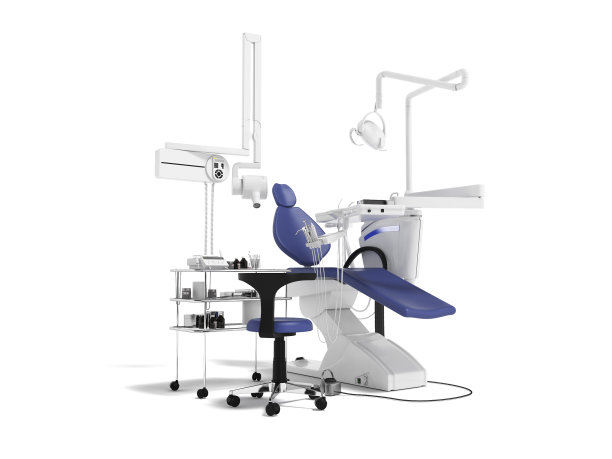Essential Safety Measures and Precautions to Ensure Successful Root Canal Treatment for Optimal Dental Health
Summary: Root canal treatment is a critical procedure aimed at preserving natural teeth and maintaining optimal dental health. To ensure successful outcomes, it is essential to implement specific safety measures and precautions before, during, and after the treatment. This article delves into four key aspects: proper patient evaluation, maintaining a sterile environment, using advanced technology, and adhering to post-treatment care guidelines. Each element contributes significantly to minimizing risks, maximizing effectiveness, and promoting long-term dental health. Through understanding and implementing these essential safety measures, both practitioners and patients can work together to achieve successful root canal outcomes.
1. Proper Patient Evaluation Process

The foundation of any successful medical procedure begins with a thorough patient evaluation. Dentists should conduct comprehensive assessments to understand the patient’s medical history, current dental issues, and specific needs. Gathering information about the patient’s allergies, existing health conditions, and medication can significantly reduce complications during the root canal treatment.
Additionally, imaging techniques such as X-rays play a crucial role in diagnosing the extent of the infection or decay. Radiographs allow the dentist to visualize root canal anatomy accurately, ensuring that all infected tissue is addressed. Proper evaluation not only influences the treatment plan but also helps in anticipating potential challenges that may arise during the procedure.
Informed consent is another critical component of the patient evaluation process. Patients must be educated about the root canal procedure, its benefits, and potential risks involved. Engaging in open communication fosters trust and helps patients feel more comfortable, thus enhancing the overall experience.
2. Maintaining a Sterile Environment
A sterile environment is paramount in reducing the risk of infection during dental procedures, including root canals. Dentists and their teams must adhere to strict sterilization protocols, which involve disinfecting all tools and materials used during the treatment. This includes autoclaving instruments and ensuring that any disposable items used are brand new.
During the procedure, the dentist should wear proper personal protective equipment (PPE), including gloves, masks, and eyewear, to create a barrier against bacteria. Additionally, the treatment area should be sanitized before the commencement of the procedure to minimize the risk of cross-contamination.
Furthermore, the workflow within the dental operatory must be organized and methodical. Ensuring that every step of the treatment has a designated space and that tools are within reach can streamline the process, reducing time during which patients may be exposed to potential contaminants. Safety and hygiene should always be a top priority.
3. Utilizing Advanced Technology
In recent years, technological advancements have transformed root canal treatment, making procedures safer and more efficient. Tools such as digital radiography, dental operating microscopes, and apex locators provide enhanced visualization and accuracy. These technologies help dentists identify and treat all canals effectively and minimize the chance of missing any infected tissue.
Three-dimensional imaging also plays a significant role in modern endodontics. Cone-beam computed tomography (CBCT) allows for detailed examinations of complex root canal systems, aiding in precise diagnoses and tailored treatment plans. By embracing such innovations, practitioners can enhance treatment outcomes and reduce patient discomfort.
Moreover, the introduction of rotary endodontics has simplified the cleaning and shaping process of root canals. Using rotary instruments can speed up the procedure while maintaining high precision, further optimizing the treatment experience. Investing in advanced technology is not only a commitment to efficiency but also a dedication to patient safety and comfort.
4. Adhering to Post-Treatment Care Guidelines
The importance of post-treatment care cannot be overstated in ensuring the long-term success of a root canal. After the procedure, patients should receive clear and concise instructions regarding pain management, oral hygiene, and dietary restrictions. Ensuring that patients understand these guidelines can significantly reduce the likelihood of complications.
Follow-up appointments are essential for monitoring healing and addressing any concerns that may arise after treatment. Regular check-ups allow the dentist to evaluate the success of the procedure and intervene promptly should any issues develop. Patients should feel encouraged to reach out with questions or discomfort, fostering a supportive relationship between them and their dentist.
Additionally, educating patients on the signs of complications, such as prolonged pain or swelling, is crucial. By being vigilant and proactive in addressing potential concerns, patients can contribute positively to their recovery and overall dental health.
Summary:
In conclusion, prioritizing essential safety measures and precautions is vital for successful root canal treatments. From thorough patient evaluations and maintaining a sterile environment to utilizing advanced technology and adhering to post-treatment care, these elements work in harmony to ensure optimal dental health. By integrating these practices, dental professionals can enhance patient outcomes and create a foundation for long-lasting oral health.
This article is compiled by Vickong Dental and the content is for reference only.



